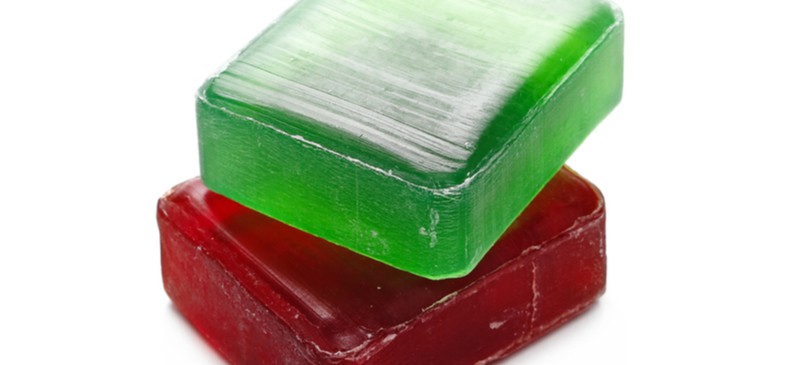
If you’re looking for a new ingredient to boost your natural skin care routine, you may want to consider glycerin. Research demonstrates that topical use of this compound can improve dry skin conditions and even boost epidermal barrier function (a key aspect of optimal skin health).
As an emollient, it can help moisturize as well as soften the skin. It can also help discourage irritated, flaky or itchy skin.
You may already use a natural product that contains this ingredient, such as glycerin soap. If you’re not already incorporating it into your skin care regimen, there are some reasons why you may want to consider doing so.
What Is Glycerin?
A German chemist, Carl Wilhelm Scheele, discovered this compound in 1783, but it wasn’t until 1811 that a french chemist named Michel-Eugène Chevreul introduced the term “glycerin.”
What is it? Also called glycerine or glycerol, glycerin is a colorless, odorless, sweet-tasting liquid that is considered to be non-toxic.
What is glycerin made of? This natural compound can come from animal fat or vegetable oils, such as palm, coconut or soybean oil.
It can also be made synthetically from propylene.
Glycerin structure (C3H8O3) is composed of three carbon molecules, eight hydrogen molecules and three oxygen molecules. It is a key component of triglycerides and phospholipids.
When the human body uses stored fat as an energy source, glycerol and fatty acids are released into the bloodstream.
Common Uses
What is glycerin used for? It is probably best known for its use in skin care products.
It’s likely not hard to find a glycerin soap or a glycerin cream in your local drugstore. If you’re a fan of making homemade soap, then you may already be familiar with the glycerin soap base.
As a humectant, this ingredient is often found as an ingredient in cosmetic products.
In addition, glycerol is sometimes used in food and beverages as a solvent, sweetener or humectant. It can also help preserve food and beauty products.
READ RELATED: The 15 Best Maternity Jeans That Are Actually Comfortable
Products that commonly contain this ingredient include:
- face washes
- skin creams and lotions
- skin serums
- skin toners
- soap
- mouth washes
- cough medicine
- condensed milk
- processed meats
- soybean products
- condiments
- commercial baked goods
- e-cigarette liquid
- antifreeze
Wondering where to buy glycerin? Pure liquid glycerin can be purchased online or at many drugstores.
How costly is glycerin price? A small bottle (around eight ounces) of 100 percent pure glycerin for topical use can be purchased for around $7 to $8.
You can find brands that are not derived from animal fat at that relatively low price too.
Benefits
As a humectant, this compound attracts water to itself. How can this benefit skin (and hair) health?
It helps prevent moisture loss and improve skin dryness.
A 2008 study published in the British Journal of Dermatology highlights the following potential skin benefits of glycerin:
- boosts skin hydration
- better skin barrier function
- protection from skin irritants
- “acceleration of wound-healing processes”
In addition, it is often recommended for use on some of the most stubborn dry patches, such as hand and foot calluses.
If you’re interested in trying it, look for natural products that contain this moisture-boosting ingredient. From toner to face cream, you can easily find a product that contains this ingredient for one or more steps of your routine.
Risks and Side Effects
Is glycerin safe? Most emollients like it can be used safely and effectively without unwanted side effects.
However, burning, stinging, redness or irritation can occur from any topical product. If any of these symptoms persist or become worse, seek medical attention.
Some people claim that you can use glycerin for skin whitening, but it’s not clear if this is a definite benefit.
Experiencing a serious glycerin allergy is typically considered rare, but seek immediate medical care if you exhibit signs of a serious allergic reaction.
Conclusion
- Glycerin (also called glycerol or glycerine) is a colorless, odorless, sweet-tasting liquid that is considered to be non-toxic.
- What is vegetable glycerin? It is derived from non-animal sources such as coconut, soybean or palm oil. This compound can also come from animal fat or be made synthetically.
- You can find it in food, but most foods that contain it are not considered “healthy foods.” These include condensed milk, commercial baked goods and processed meats.
- You can use it for skin to prevent dryness or improve skin that is already dry and/or irritated.
- It can be found in many natural beauty products, and it can also be used to create homemade products, such as soap.
- You can also use glycerin for hair to boost moisture levels and prevent dryness.
Source: Dr. Axe






